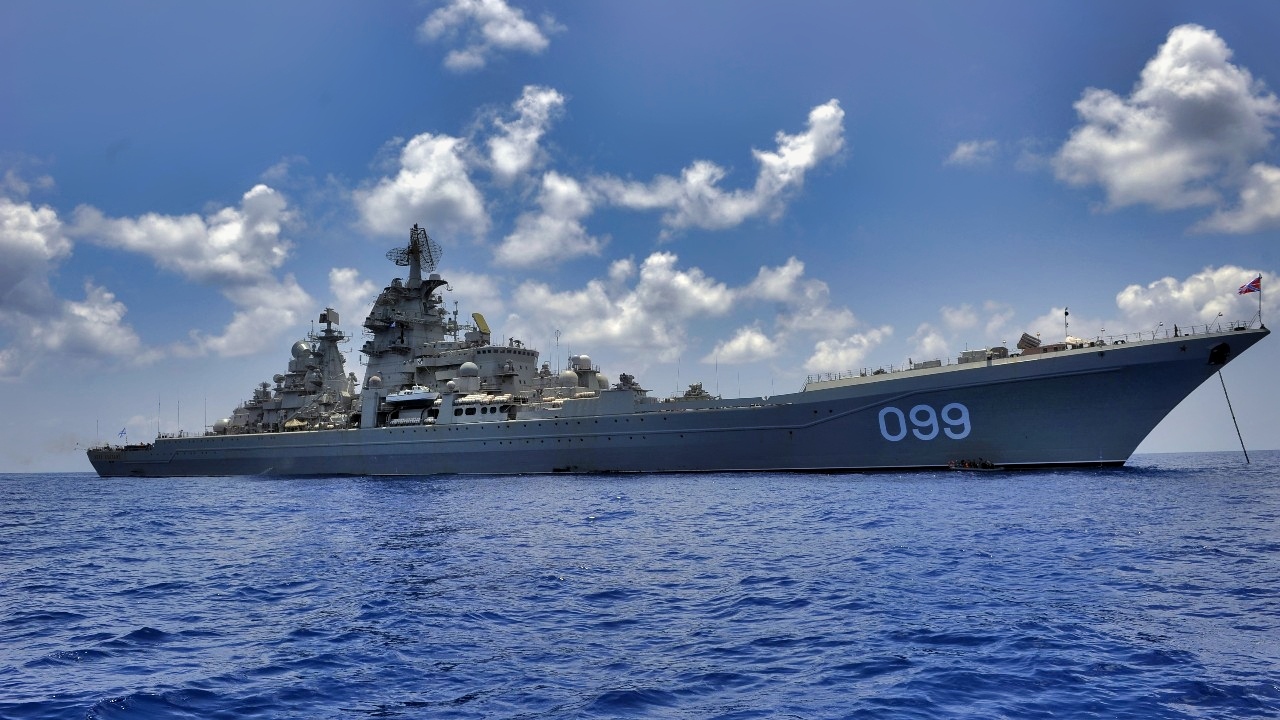Summary and Key Points: Russia is striving to modernize its aging Kirov-class battlecruisers—massive nuclear-powered warships from the Cold War era designed to challenge NATO carrier groups.
-Despite extensive upgrades, particularly on the Admiral Nakhimov, constant delays and aging infrastructure cast doubt on their effectiveness in today’s warfare.
-The vulnerability of large, expensive ships to precision-guided weapons and drone warfare, as illustrated by Russia’s naval setbacks in Ukraine, further questions their relevance.
-Russia’s ongoing investment in such outdated naval assets reveals persistent Cold War ambitions, but whether this costly modernization aligns with contemporary maritime strategy remains highly uncertain, particularly amid resource constraints from Ukraine.
Russia’s Kirov-Class Problems Just Won’t Ever Go Away
Russia is trying to give the once-formidable ships a new lease on life.
The Kirov-class battlecruisers, introduced by the Soviet Union during the latter stage of the Cold War in the 1980s, represent a unique class of nuclear-powered guided-missile warships that do not have a clear analog in Western navies.
These ships were designed with formidable offensive and defensive capabilities to counter NATO forces, particularly American carrier strike groups.
Their design emphasized speed, range, and firepower, enabled by a nuclear propulsion system and a heavy missile arsenal, including the P-700 Granit and S-300FM air defense systems.
They were conceived as command ships and task force destroyers, optimized for blue-water dominance against the crown jewels of NATO power at sea.
Kirov-Class Battlecruiser: Cold War-era Soviet Naval Doctrine
The ship’s design considerations reflected Cold War-era Soviet naval doctrine and aimed to at least partially offset NATO’s technological naval edge.
These ships were envisioned as symbols of Soviet maritime power, capable of independent operations far from home waters.
The substantial displacement of 24,500 tons and a top speed exceeding 30 knots emphasize mobility and survivability.
However, their usefulness was contingent on Soviet naval aviation to provide air cover — a dependency that has become glaringly insufficient as time goes on and in light of Russia’s minimal naval aviation capability.
Kirov-Class Admiral Nakhimov Battlecruiser: a Tale of Modernization
Admiral Nakhimov’s modernization has been a tale of massive delays and missed schedules. Initially slated for fleet re-entry into the Russian Navy in 2018, the ship’s overhaul has been marred by several missed deadlines related to challenges in refurbishing aging infrastructure and integrating cutting-edge technology into a Cold War-era ship hull.
Despite the raft of upgrades Moscow would like to incorporate into the platform, significant doubts persist about the ability of the Kirov-class battlecruisers to survive in modern naval warfare.
Advances in intelligence, surveillance, and precision-guided munitions make such large, high-value targets significantly vulnerable, especially against modern munitions.
In addition, the advantages offered by conducting warfare asymmetrically while at sea, made clear during Russia’s war against Ukraine, underscore the vulnerability of large ships in constrained and contested environments.
Upgrades for Strategic Advantage — Can it Be Done?
Despite its age, the Russian Navy’s substantial investment in the Kirov-class reflects broader strategic problems.
To a certain extent, this ship represents Russia’s persistent aspiration to field a capable navy with blue-water objectives as well as the resources and platforms to realize those deep-water objectives.
However, the war in Ukraine has made the Russian Navy’s shortcomings painfully apparent, as well as the value of using smaller, cost-effective, and attritable platforms to conduct asymmetric naval operations.
The Kirov-Class Admiral Nakhimov’s refurbishment, therefore, is a bit of a strategic contradiction and is indicative of a Russian naval strategy still reliant on Cold War realities and weaponry and one that is increasingly out of step with the modern situation at sea.
The enduring prioritization of capital ships like Admiral Nakhimov and the troubled aircraft carrier Admiral Kuznetsov suggests that old ambitions remain deeply ingrained in Russian naval strategy.
Though these big-ticket capital ships buy Russia access into an exclusive club of nations that can afford to maintain and field complex surface vessels into their navies, access alone is insufficient to field a credible naval force.
It remains to be seen if Russian work on refurbishing Cold War-era ships of the line will pay off in the long run: given the resource allocation currently for the land war in Ukraine, the answer may, in the long term, be no.
About the Author: Caleb Larson
Caleb Larson is an American multiformat journalist based in Berlin, Germany. His work covers the intersection of conflict and society, focusing on American foreign policy and European security. He has reported from Germany, Russia, and the United States. Most recently, he covered the war in Ukraine, reporting extensively on the war’s shifting battle lines from Donbas and writing on the war’s civilian and humanitarian toll. Previously, he worked as a Defense Reporter for POLITICO Europe. You can follow his latest work on X.

